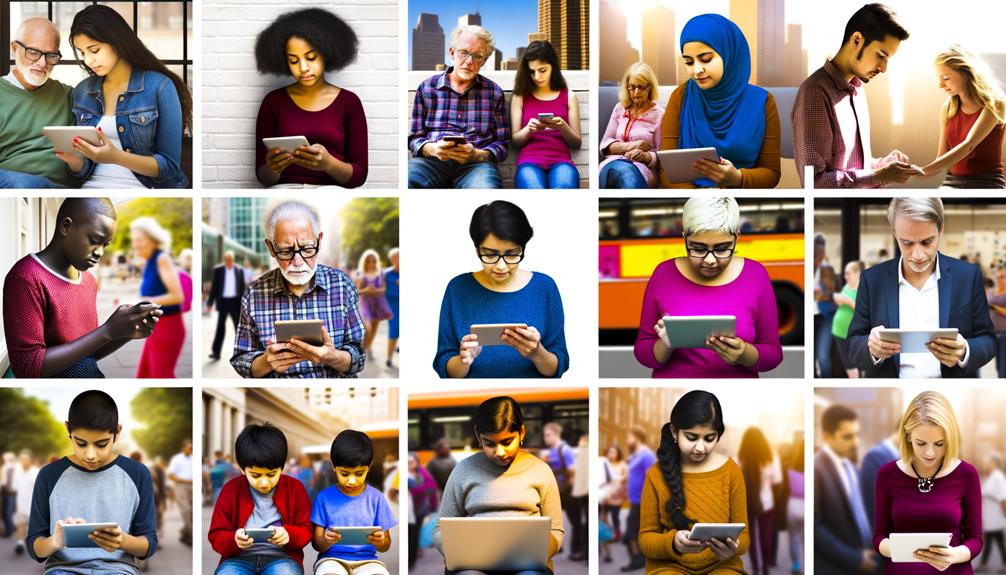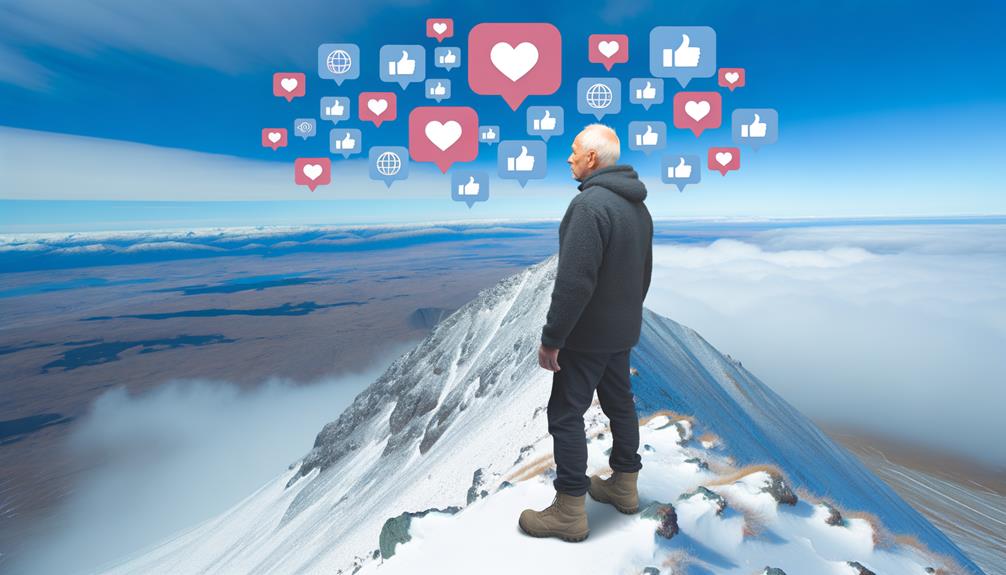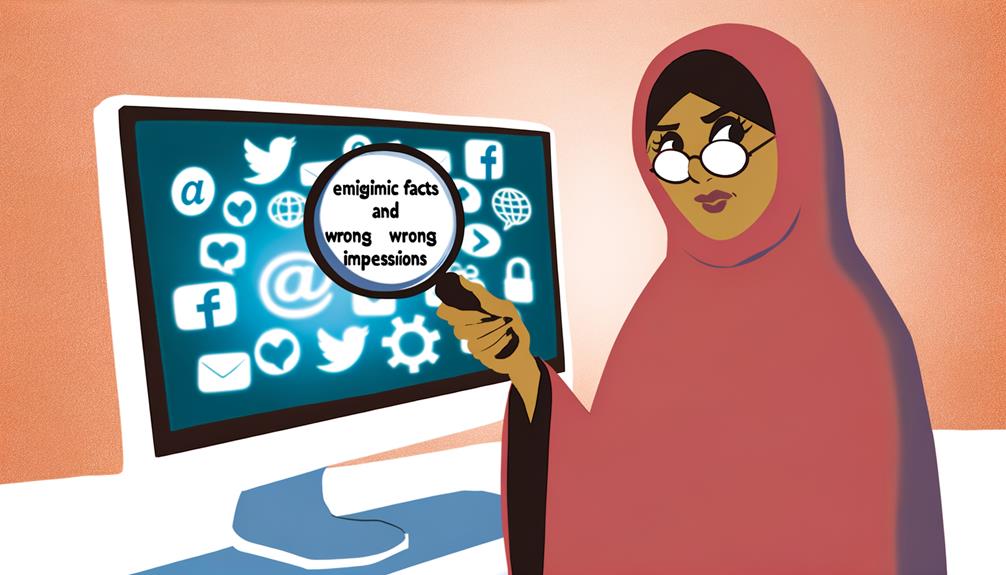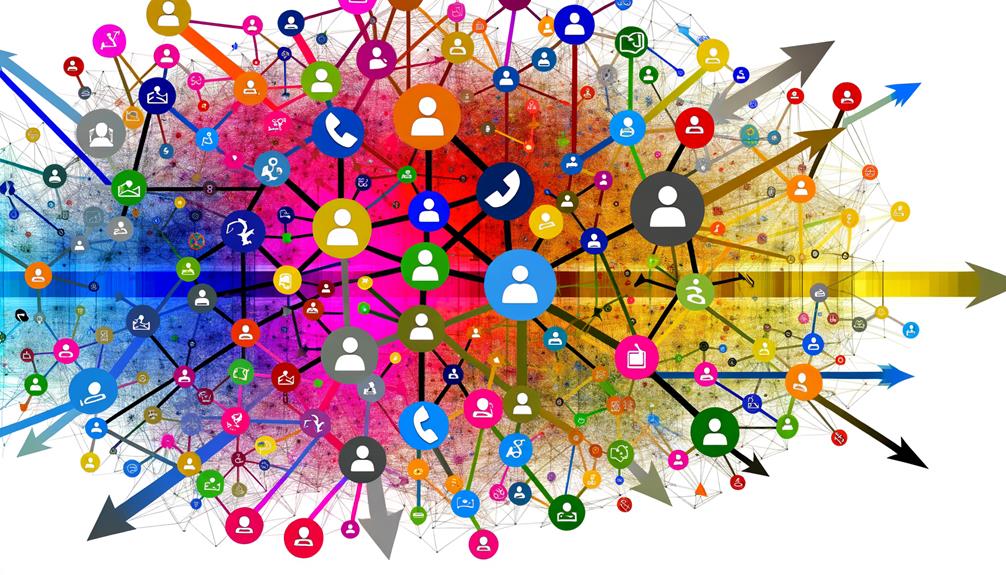In the vast landscape of social media, the digital realm can be likened to a sprawling metropolis, with users inhabiting virtual neighborhoods and platforms akin to bustling districts. Curious to uncover the intricacies of this interconnected web of individuals, you may find yourself pondering: just how many denizens populate these online avenues?
As you navigate through the upcoming sections, insights into the global reach, growth patterns, and societal implications of social media await, providing a nuanced understanding of this ever-evolving digital landscape.
Global Social Media user demographics
When examining global social media user demographics, it becomes evident that a significant portion of the population engages with various platforms. Social media has become a fundamental part of daily life for billions of people worldwide. Users from diverse age groups, backgrounds, and locations actively participate in social networking activities. From teenagers sharing moments on platforms like Snapchat and Instagram to professionals networking on LinkedIn, the reach of social media is vast and pervasive.
Demographically, there’s a noticeable trend of increasing usage among older age groups. Previously, social media was predominantly associated with younger demographics; however, platforms like Facebook have seen a surge in older users reconnecting with friends and family online. Additionally, the global distribution of social media users showcases a mix of developed and developing countries embracing these platforms for communication, entertainment, and business purposes. Understanding these demographics is crucial for businesses and marketers looking to effectively engage with their target audiences on social media platforms.
Top Social Media platforms worldwide
Analyzing the top social media platforms worldwide reveals the dominant players in the global digital landscape. From connecting with friends to sharing moments, these platforms shape how we interact online.
Here are five of the most popular social media platforms globally:
- Facebook: With billions of active users, Facebook remains a go-to platform for social networking.
- Instagram: Focused on visual content, Instagram attracts users with its photo and video sharing features.
- Twitter: Known for its real-time updates, Twitter is popular for sharing news and opinions in short posts.
- YouTube: As a video-sharing platform, YouTube appeals to a wide audience for entertainment and educational content.
- LinkedIn: Geared towards professionals, LinkedIn is essential for networking, job searching, and industry insights.
Each of these platforms offers unique features and caters to different types of users, contributing to their widespread popularity across the globe.
Growth trends in Social Media usage
Exploring the evolution of social media usage reveals dynamic trends shaping digital interactions worldwide. In recent years, the growth of social media usage has been nothing short of exponential. People are increasingly turning to platforms like Facebook, Instagram, Twitter, and TikTok to connect, share, and engage with others. The rise of influencer culture, live streaming, and short-form video content has fueled this growth, making social media a central part of daily life for many.
One of the significant trends driving this growth is the increasing accessibility of the internet and smartphones worldwide. As more people gain access to affordable mobile devices and data plans, the number of social media users continues to climb. Additionally, the pandemic has accelerated the adoption of social media as a means of staying connected while physically distanced.
Looking ahead, the growth of social media is expected to continue as new platforms emerge, existing ones evolve, and digital connectivity becomes even more ingrained in society. Stay tuned as we delve deeper into the specifics of social media penetration by region in the next section.
Social Media penetration by region
The distribution of social media usage across different regions reflects varying levels of penetration and engagement. When looking at social media penetration by region, it’s fascinating to see how people around the world interact with these platforms.
- North America boasts high social media penetration rates, with platforms like Facebook and Instagram being widely popular.
- In Europe, social media usage is prevalent, with platforms like Twitter and LinkedIn being commonly used for professional networking.
- Asia Pacific shows diverse social media preferences, with platforms like WeChat in China and Line in Japan being dominant.
- Latin America has a growing social media user base, with platforms like WhatsApp and Facebook being extensively used for communication.
- Africa exhibits increasing social media adoption, with platforms like WhatsApp and Facebook playing a significant role in connecting people across the continent.
Understanding these regional differences in social media penetration can provide valuable insights for businesses and marketers looking to effectively engage with diverse audiences worldwide.
The impact of Social Media on society
Social media’s pervasive influence has not only reshaped the way individuals communicate but has also profoundly impacted societal norms and behaviors. The ability to instantly connect with people worldwide has revolutionized activism, allowing social movements to gain momentum rapidly. However, this connectivity has also led to challenges such as the spread of misinformation and cyberbullying.
| Positive Impacts | Negative Impacts | Neutral Impacts |
|---|---|---|
| Facilitates communication | Spread of misinformation | Privacy concerns |
| Fosters community building | Cyberbullying incidents | Digital divide |
| Amplifies voices of marginalized groups | Decreased face-to-face interactions | Online activism fatigue |
| Enables rapid information dissemination | Social comparison leading to mental health issues | Filter bubbles in information consumption |
As social media continues to evolve, its effects on society will undoubtedly continue to be a topic of debate and research. It is essential for individuals to navigate these platforms mindfully, considering both the positive and negative impacts they can have on societal dynamics.
Conclusion
So, there you have it – billions of social media users scrolling, liking, and sharing every day.
But hey, who needs real human interaction when you have perfectly curated online personas, right? Keep feeding that algorithm and staying connected, because who needs face-to-face conversations when you can just slide into DMs instead?
Social media: where real life meets virtual reality. Keep on scrolling, folks.









